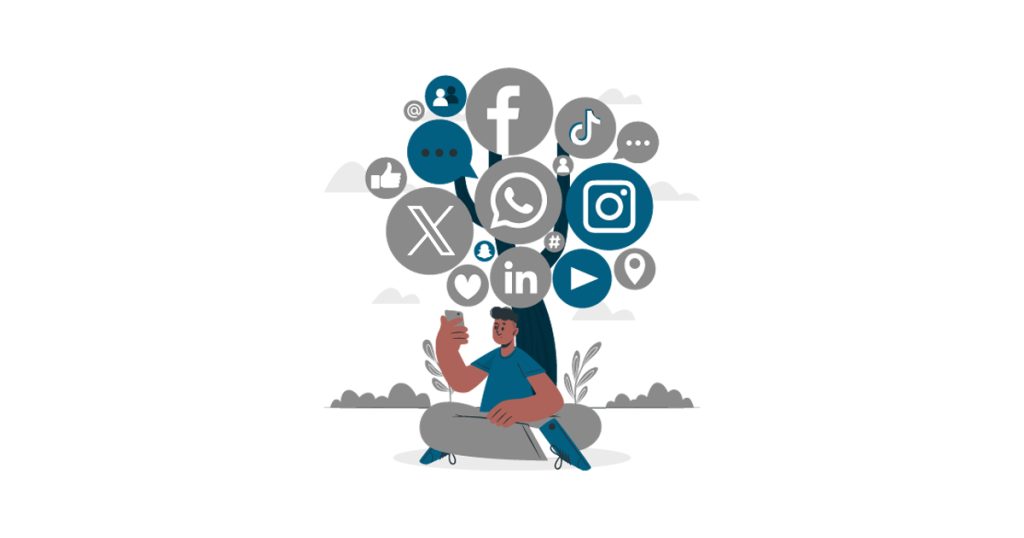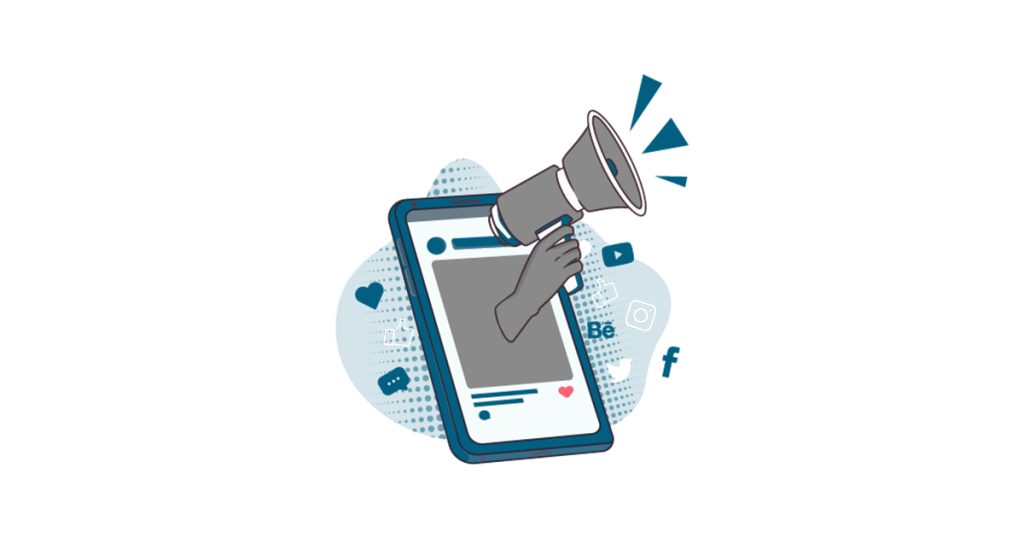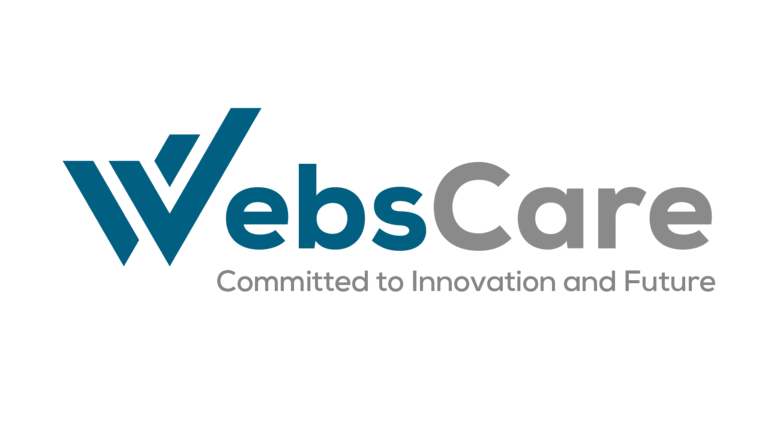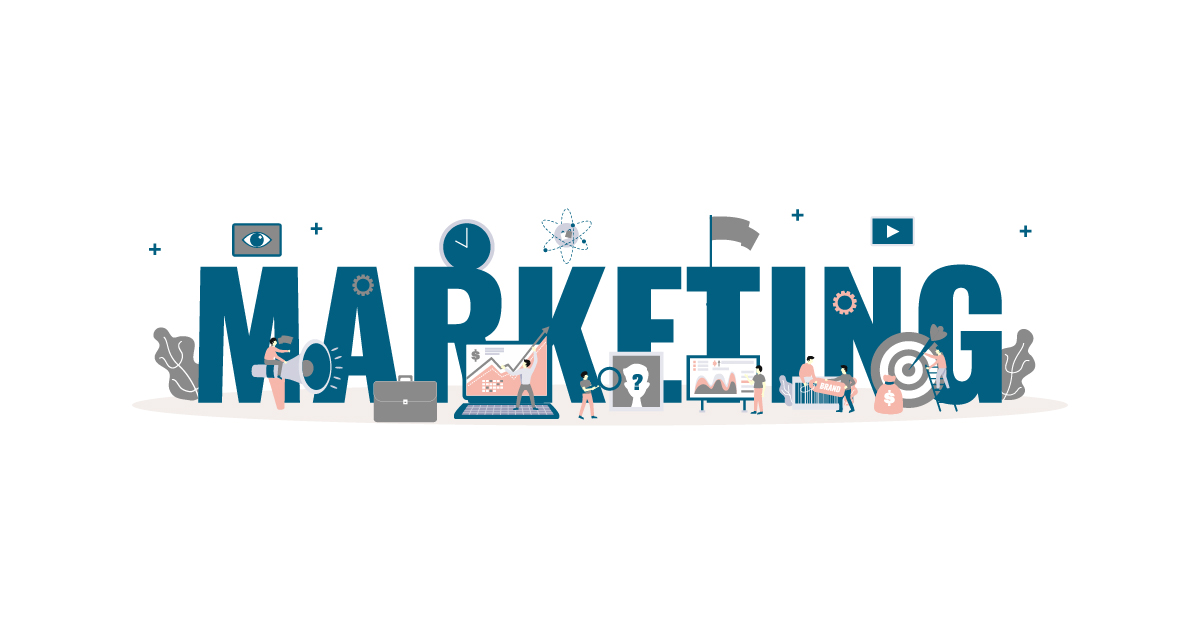Today, businesses must establish a strong online presence to reach their target audience effectively. Digital marketing has become an essential strategy for promoting products, services, and brands through digital channels. Unlike traditional marketing, digital marketing uses 5G and electronic devices to engage potential customers. In 2025, digital marketing is projected to see continued growth, with social media advertising reaching $276.7 billion and AI playing a larger role in marketing strategies while personalization and user-generated content are expected to gain importance. In this article, our WebsCare team explores what digital marketing is, its various types, real-world examples and the benefits it offers to businesses of all sizes.
Why every business needs a mobile app in today’s digital Age? Let’s read more about it.
What is Digital Marketing?
Digital marketing refers to the promotion of products, services or brands using digital technologies, primarily the internet. It includes various online marketing strategies such as search engines, social media, email, mobile apps and websites to connect with current and prospective customers.

Here is a table with headings for the key characteristics of Digital Marketing:
| Characteristic | Description |
|---|---|
| Cost-Effective | More affordable compared to traditional marketing methods. |
| Measurable | Analytics and tracking tools help monitor performance. |
| Highly Targeted | Allows businesses to reach specific audiences effectively. |
| Interactive | Enables direct engagement and communication with customers. |
| Flexible | Campaigns can be adjusted in real time based on performance. |
Types of Digital Marketing
Digital marketing includes multiple strategies, each serving different business goals. Here are the most common types:

1. Search Engine Optimization
SEO involves optimizing a website to rank higher on search engine results pages (SERPs) organically. SEO helps drive organic (unpaid) traffic to websites, increasing their chances of ranking higher on search engines like Google and Bing. By implementing effective SEO practices, businesses can attract targeted audiences, improve user experience, and boost online credibility, ultimately leading to higher engagement and conversions.
It includes:
- On-page SEO (content, headings, keywords, meta tags).
- Off-page SEO (backlinks, social signals).
- Technical SEO (site speed, mobile-friendliness).
Example: A blog post optimized for “best running shoes” to attract organic traffic from Google.
2. Pay-Per-Click Advertising
Pay-Per-Click (PPC) advertising is a digital marketing model where advertisers pay a fee each time their ad is clicked. It allows businesses to bid for ad placement in search engine results (like Google Ads) or on social media platforms (such as Facebook Ads). PPC ensures that ads are shown to users actively searching for related products or services, making it a highly targeted approach. It includes formats like search ads, display ads, shopping ads, and remarketing ads. The success of a PPC campaign depends on factors like keyword selection, ad relevance, landing page quality, and bidding strategy. When optimized effectively, PPC can drive immediate traffic, increase brand visibility, and generate high-quality leads for businesses.
Common platforms include:
- Google Ads (search and display ads).
- Facebook Ads (social media advertising).
- LinkedIn Ads (B2B marketing).
Example: A shoe company running Google Ads for “buy sports shoes online” to drive sales.
3. Social Media Marketing
Social Media Marketing (SMM) is a digital marketing strategy that involves using social media platforms like Facebook, Instagram, Twitter, LinkedIn, and TikTok to promote brands, products, or services. It includes creating and sharing engaging content, running paid advertisements, interacting with followers, and analyzing performance metrics to optimize campaigns. SMM helps businesses increase brand awareness, drive website traffic and generate leads by leveraging the vast user base of social media. With targeted advertising, influencer collaborations and community engagement, brands can build strong relationships with their audience and achieve marketing goals effectively.
Example: A fashion brand “Sapphire” uses Instagram influencers to show their new collections.
4. Content Marketing
Content marketing is a strategic approach to creating, distributing, and promoting valuable, relevant and consistent content to attract and engage a specific audience. It focuses on providing informative, entertaining or educational content rather than directly promoting a product or service. This can include blog posts, videos, infographics, podcasts and social media content. The goal of content marketing is to build trust, establish brand authority and drive customer actions such as lead generation or sales. Companies like HubSpot, Coca-Cola and Red Bull successfully use content marketing to connect with their audiences and enhance brand loyalty.
Example: A SaaS company publishing a guide on “How to Improve Productivity with AI Tools.
How web development in Pakistan is revolutionizing the digital landscape? Let’s read more about it.
5. Email Marketing
Email marketing is a digital marketing strategy that involves sending targeted emails to a group of recipients to promote products, services or brand engagement. It is used for customer acquisition, retention and relationship-building through personalized messages, newsletters, promotional offers and automated follow-ups. Businesses use email marketing to nurture leads, boost sales and keep customers informed about new updates. With advanced segmentation and automation, companies can tailor content based on user behavior, preferences and demographics, ensuring higher engagement and conversion rates. It is a cost-effective and measurable marketing tool that enhances brand loyalty and drives business growth.
Example: An e-commerce store sending discount offers to subscribers.
6. Affiliate Marketing
Affiliate marketing is a performance-based digital marketing strategy where businesses reward individuals or partners (affiliates) for driving traffic or sales through their referral links. Affiliates promote products or services via blogs, wparagraph1ebsites, social media or email marketing, earning a commission for each successful purchase made through their unique affiliate link. This model benefits both businesses which gain wider reach without upfront advertising costs and affiliates who earn passive income. Popular affiliate programs include Amazon Associates, ClickBank and Shopify’s affiliate program where influencers, bloggers and content creators leverage their audience to generate sales.
Example: A tech blog earns commissions by recommending Amazon products.
7. Influencer Marketing
Influencer marketing is a digital marketing strategy that involves collaborating with individuals who have a strong online presence and a dedicated following to promote products or services. These influencers who can be celebrities, social media personalities or industry experts, use their credibility and reach to influence consumer decisions. Brands partner with influencers on platforms like Instagram, YouTube, TikTok and Twitter to create authentic content such as sponsored posts, reviews or unboxings that resonate with their audience. This marketing approach helps businesses increase brand awareness, build trust and drive sales by tapping into the influencer’s loyal and engaged community.
Example: A skincare brand partnering with a beauty Instagram influencer “Jannat Mirza” for product reviews.
8. Video Marketing
Video marketing is a digital marketing strategy that uses video content to promote products, services, or brands across various platforms such as YouTube, TikTok, Instagram and Facebook. It includes different formats like tutorials, product demonstrations, testimonials, live streams and advertisements to engage audiences and boost brand awareness. Video marketing is highly effective due to its ability to capture attention quickly, convey messages visually and enhance audience retention. Businesses use it to showcase their offerings, educate customers and drive conversions. With the rise of short-form videos and AI-powered content creation, video marketing continues to be a powerful tool for digital engagement and sales growth.
Example: An example of video marketing is Nike’s “You Can’t Stop Us” campaign on YouTube.
9. Mobile Marketing
Mobile marketing is a digital marketing strategy that targets users on smartphones, tablets and other mobile devices through various channels such as SMS, mobile apps, push notifications, social media and mobile-friendly websites. It allows businesses to engage with consumers in real-time, using personalized messages, location-based promotions and interactive content to enhance customer experience. Popular mobile marketing tactics include in-app advertisements, mobile search ads and SMS campaigns, ensuring brands stay connected with their audience anytime, anywhere. With the increasing use of mobile devices, this marketing approach has become essential for businesses aiming to reach and convert a highly engaged audience.
Example: A food delivery app “Food Panda” sends push notifications for discounts.
“Stylo” uses SMS marketing to notify customers about exclusive deals.
10. Marketing Automation
Marketing automation refers to the use of software and technology to streamline, automate, and measure marketing tasks and workflows, allowing businesses to raise leads, personalize customer interactions and improve efficiency. It includes automated email campaigns, social media scheduling, customer segmentation and lead scoring that help businesses deliver targeted content at the right time. By reducing manual effort and optimizing marketing processes, marketing automation enhances customer engagement, boosts conversion rates and provides data-driven insights for better decision-making. Popular marketing automation tools include HubSpot, Mailchimp, Marketo and ActiveCampaign, enabling businesses to scale their marketing efforts efficiently.
Example: An e-commerce store “Amazon” automatically sends reminder emails to customers who abandon their carts, offering discounts or incentives to complete the purchase.
Looking for expert web development services? Get in touch with us today!
Conclusion
Digital marketing is a powerful tool for businesses to connect with their audience, increase visibility, and drive sales. Companies can create impactful campaigns that deliver measurable results by using different strategies like SEO, PPC, social media and email marketing. With its ability to target specific demographics, provide measurable results and enhance customer engagement, digital marketing has become an essential tool for businesses of all sizes. From global brands like Amazon and Nike to small startups, companies use digital channels to drive brand awareness, generate leads and increase sales. As technology continues to evolve, businesses that adopt and adapt to digital marketing trends will stay ahead in the competitive landscape, ensuring long-term success and growth.


